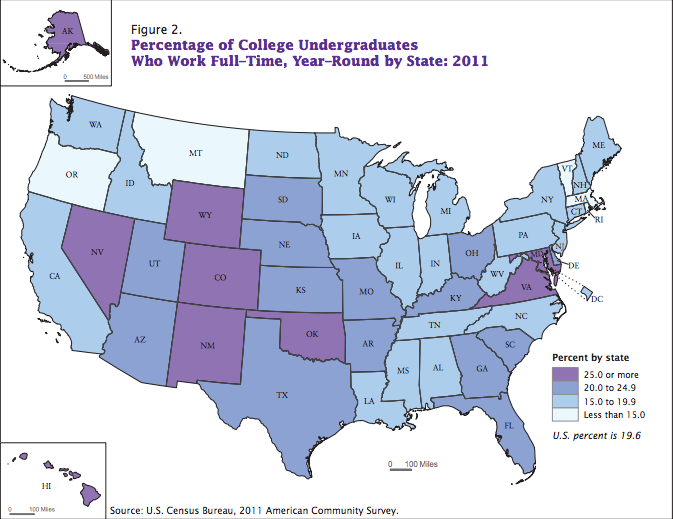Newsworthy headlines about schools often report on the quality of a state’s education, or the status of funding that public schools are receiving from the government. However, trends local education also have other consequences and opportunities for communities. The following databases can be used as resources to spark or contribute to stories about both traditional and nontraditional education wherever you’re reporting.
NCES: Public vs. Private School Enrollment
The National Center for Education Statistics provides data that journalists can use to determine enrollment figures in their state’s public and private school systems. The enrollment and popularity of public and private schools varies broadly, and for different reasons. Overall, enrollment in U.S. private schools has decreased by 3 percent over the last 20 years, and NCES data projects that it will continue to decline in the next several years.
REPORTER’S TAKEAWAY Use this database to see how enrollment statistics for your state compares to the national figures and get a good sense of upcoming education enrollment trends.
U.S. Census Bureau: School Enrollment and Work Status
When thinking about the number of jobs in a community, few think about how local students impact those figures. According to the School Enrollment and Work Status report by the U.S. Census Bureau, 83 percent of U.S. graduate students work while they are taking classes. Similarly, about 70 percent of undergraduate college students reported working during the school year. Some states stand out compared to others with a greater percent of student workers. For example, Oklahoma, Virginia and Colorado represent some of the states with the highest percentages of undergraduate student workers.
REPORTER’S TAKEAWAY Use this data to determine how your local economy may be affected by the number of college students that work during the school year. See how this may impact job availability during the summer break.

Pew Research Center: Nontraditional & Lifelong Learning
Lifelong learning has become an increasingly popular concept, as illustrated by Pew Research Center’s Educational Ecosystem Survey. 73 percent of adults surveyed consider themselves lifelong learners. Most of the interest in pursuing additional education (in this sense, not necessarily “school-style education”) come from the desire to “learn something that would make their life more interesting and full.” In fact, 80 percent of lifelong learners cite this as their reasoning for pursuing additional education. Many workplaces are providing on-site learning, meaning there could be unforeseen repercussions for four-year and community colleges.
REPORTER’S TAKEAWAY This dataset includes information about what types of additional learning are pursued, how those opportunities are presented, and what encourages people to seek out extracurricular learning.











